Advice
The riding helmet: Central to safety
6 September 2022
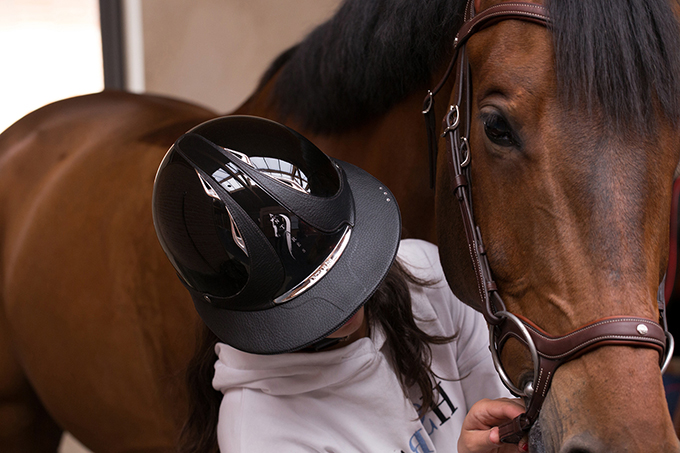
Advice
6 September 2022

Riding has many benefits whether you do it competitively or for leisure. As an outdoor sports activity in contact with nature, riding boosts your self-confidence and hones the way you manage your emotions in contact with your horse. Riding also fosters early learning in young children’s development and helps people with disabilities or those in need. The fact remains, though, that horses are animals with their own way of thinking which you have to communicate with.
This is a long learning journey that requires patience with the inevitable fall, and falling off a horse is all part of the job.
Wearing a helmet is compulsory in some riding schools and stables to reduce the risk of injury, yet often neglected when you become an owner or amateur/professional rider. While hospital admissions* are highest for horse riding, too many riders leave their helmets in the tack room relying on a special bond with their horse or an advanced riding level. Yet, when a rider and/or their horse falls it can happen at random, such as tripping on an exposed root, a sudden lunge to avoid low-flying birds, etc. There can be many reasons.
Wearing a helmet doesn’t compromise your riding skills or the bond you may have with your horse. It can, however, help you avoid serious, even life-threatening, injuries if you do fall. That’s why this feature provides an in-depth analysis of the materials in your helmet, together with drop tests. Armed with this knowledge, you’ll be able to assess how your helmet performs and the need to change it after each blow or fall.
According to a study published in “Trauma Surgery & Acute Care Open” in October 2021, involving 25,000 people who were treated for horse-related injuries*, riding may well be the most hazardous sport, ahead of motor racing, motorbike racing and skiing.
Now, if you’re a rider, you might be a bit surprised by these findings, yet the report states that out of the 25,000 people treated for horse-related injuries*, 23% suffered head injuries while a quarter of them experienced serious neurological trauma. The study highlights that a high number of casualties were not wearing helmets. It concludes with a stark message: Wearing protective equipment significantly reduces the seriousness of injuries. A riding helmet is subsequently paramount to keeping you safe.
Choosing between a riding hat or helmet is a bit like deciding between a pain au chocolat or a chocolatine. The riding hat is actually the precursor to the helmet. Riding helmets are far-removed from the time of velour-covered and very often ill-fitting riding hats (with or without chinstraps depending on when you started riding). By contrast, riding helmets are made from innovative and frequently highest-quality materials. They provide riders with proper comfort and optimum protection. Above all, riding helmets meet very specific standards that we’ll discuss below. So, between a simple plastic shell and ever-more technical components, it’s a no-brainer.
The outer shell of your Antarès riding helmet is made of ABS. Its purpose is to disperse the energy from an impact over the helmet’s surface. When your helmet strikes an object, the shell distributes the shock wave by spreading it out. ABS, or acrylonitrile butadiene styrene, to give it its full name, is injected into a mould to make a perfectly round shape. Both light and rigid, ABS is also highly scratch-resistant which is why a helmet that has experienced an impact may be scratch-free. That said, no marks on the outer shell doesn’t mean that your helmet will give you optimum protection thereafter.
The liner is made from EPS (expanded polystyrene). It absorbs the energy by compressing on impact. As a result, the liner becomes far denser and cannot absorb the force a second time as it is ‘single-impact‘. Even if there are no visible scratches on the outer shell, a helmet that has had an impact may need to be changed. Liner densities vary according to the size of our helmets.
To demonstrate this, take a look at the inside of 2 Antarès riding helmets. The cross-section shows you the liner of a new helmet in its original state. It is round and sits snugly in the curves of the outer shell.

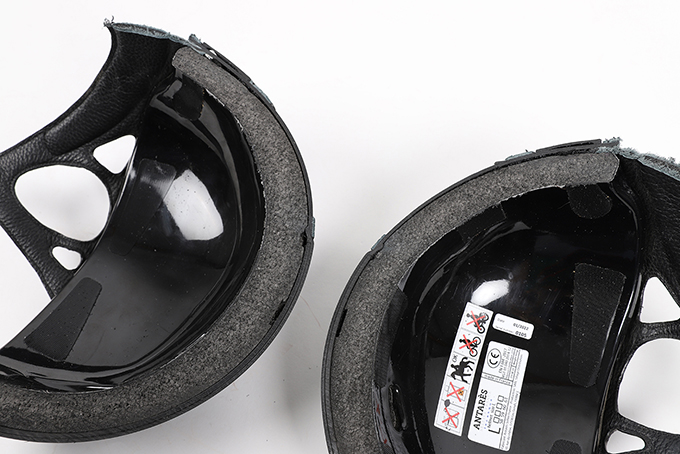
Now, here is a riding helmet that has been struck at 28 km/h (impact carried out for demonstration on a test bench).
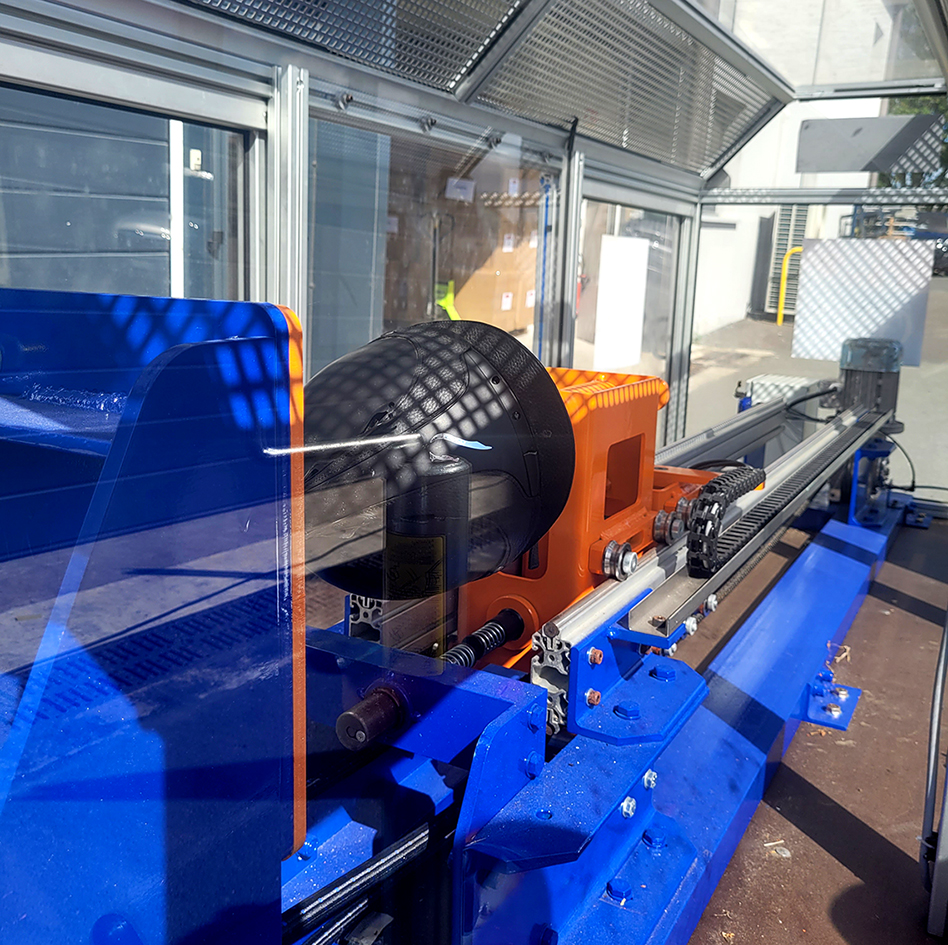
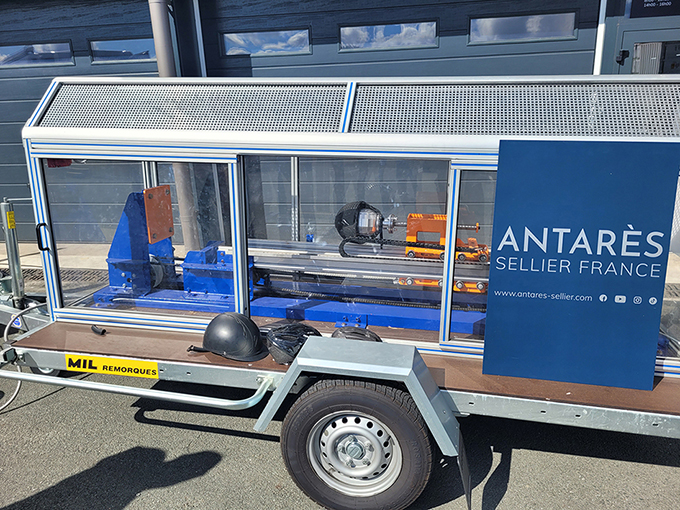
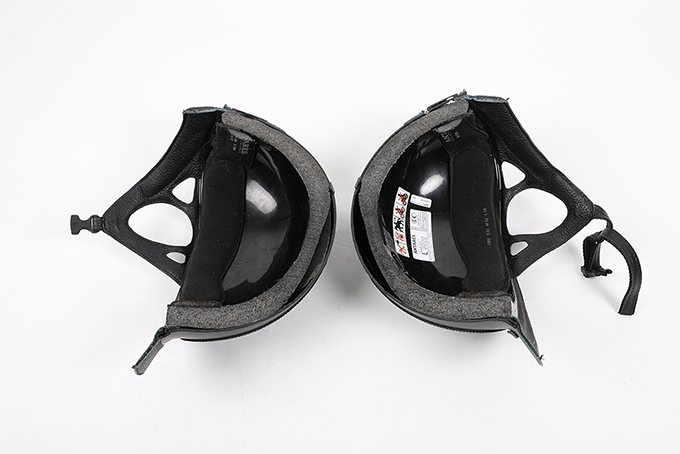

The liner has retracted to absorb the force from the impact and protects the rider. But, as soon as the liner loses its flawlessly snug fit with the shell, it can no longer protect you. Also, it will never revert to its initial shape. This change in the liner is invisible to the naked eye unless a cross-section is taken of the helmet (the liner is beneath the outer shell). This shows why you must change your riding helmet after an impact, even if there are no visible marks on it.
Made from polycarbonate (PC), inmould shells protects the liner. As you’ll know from the above, the liner plays a vital role in the protection provided by your helmet. That’s why it is important to keep it out of harm’s way. Apart from impacts, sweat from a rider’s head or a pair of gloves tucked into your helmet could compromise the liner’s mechanical properties. An inmould shell also constitutes a more hygienic option for your helmet as it can be cleaned. We suggest you simply use water or a small amount of soap if needed, while chemical products should be avoided.
Antarès is the only brand on the market to offer a fully inmould inner layer in their helmets.
Better know as “harness” or “chinstrap“, this ensures your helmet fits securely on your head and stops any rotation. The harness has 3 or 4 points. These points correspond to the number of fastenings on your helmet. Accordingly, all Antarès riding helmets have 3-point harnesses. The Y-shaped fastening system has more widely spaced points to reduce any helmet rotation. What’s more, our helmets have nylon straps and POM buckles (a plastic compound).
Added extra: Antarès chinstraps are leather, made from offcuts from our bespoke saddle workshops. Beautiful and responsible!
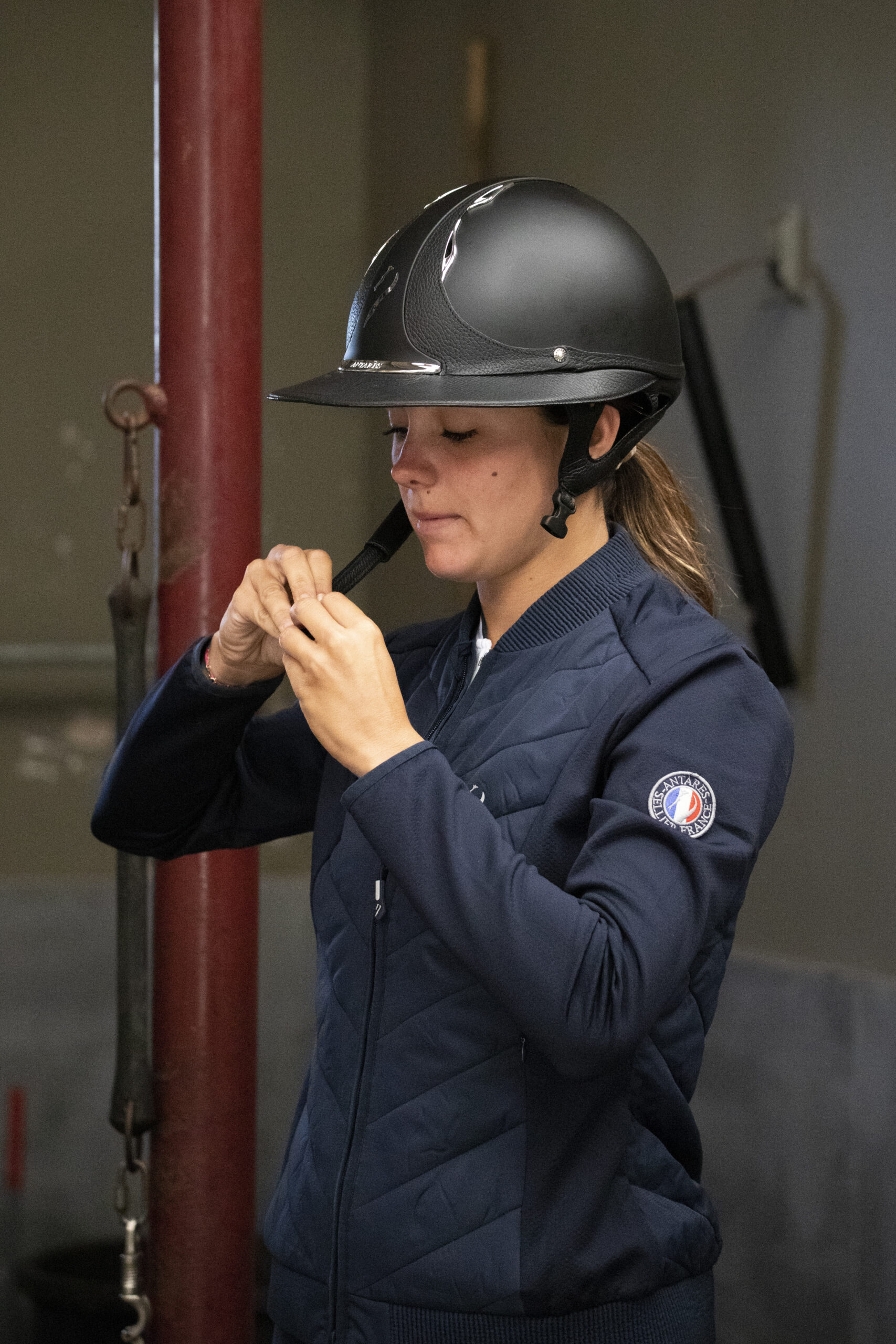
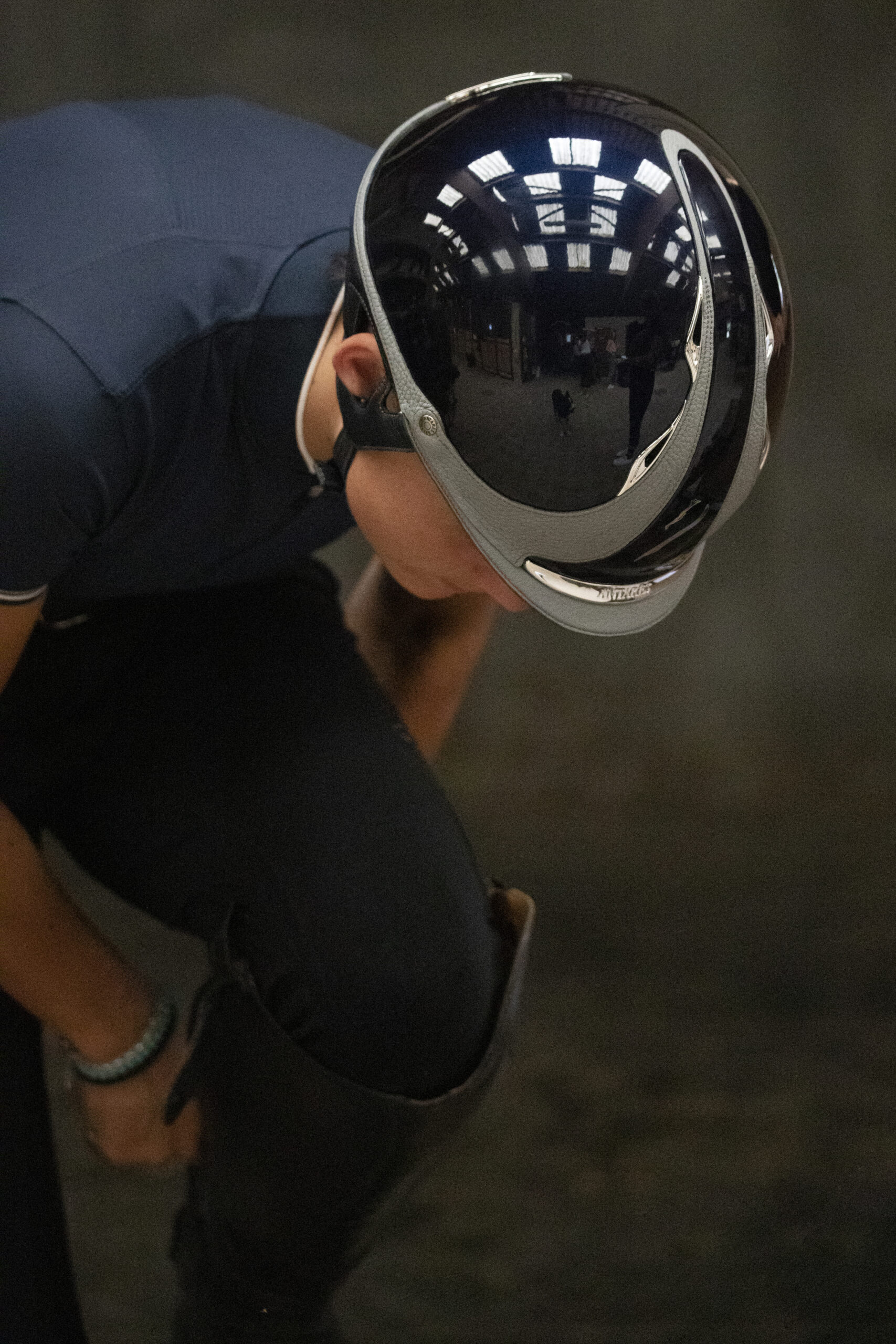
Visors, or peaks, must be flexible, especially to protect the rider’s nose in the event of a fall. This design quality is actually stipulated to pass visor deformation tests set by safety standards. There are, nevertheless, a range of visors that effortlessly adapt to your needs and desires.
Attached to the inmould shell, helmet pads ensure your riding helmet fits perfectly and provides optimum comfort. Whether your head is round or oval, helmet pads will fit the shape of your head.
Riding helmets are of the utmost importance for the safety of all riders, whatever their level, so please take special care of them. It is strongly advised to change your helmet after an accident or fall. As our practical test shows, your helmet can no longer keep you properly safe if the liner has retracted or been crushed, even if there are no marks on it from the fall.
Remember, it’s not so much the cost of a riding helmet but an expense that could save your life.
[ How is an Antarès riding helmet designed? We will explain everything to you ]
*Source : study conducted from 2007 to 2016 on casualties from trauma clinics.
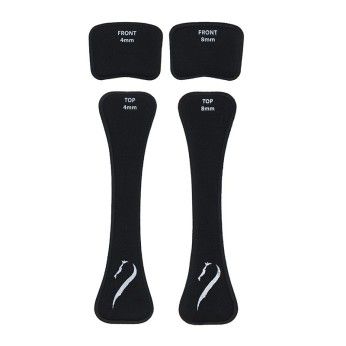
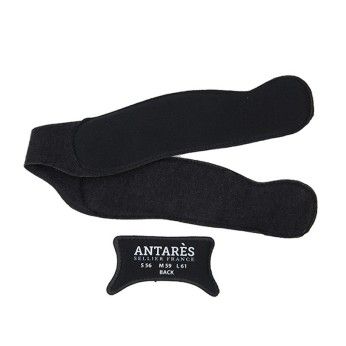

350,00€
With its matte black shell and brown or black leather finish, the Reference helmet is sober and classic. Its timeless design combines with the comfort of a breathable helmet. The helmet conforms to European standards, enabling riders to ride in complete safety. The visor must be flexible to protect the rider’s nose in the event of a fall, to prevent breakage and injury. The Eclipse visor adds an elegant, chic finish to the helmet. Its size, larger than a conventional visor, protects you from the sun during your riding sessions in the arena or outdoors.
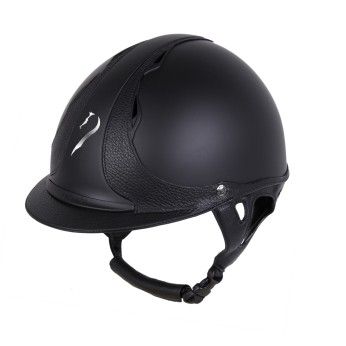
295,00€
With its matte black shell and brown or black leather finish, the Référence model is sober and classic. Its timeless design combines with the comfort of a breathable helmet. The helmet conforms to European standards, enabling riders to ride in complete safety.If out of stock, lead time 6 to 8 weeks for size L.
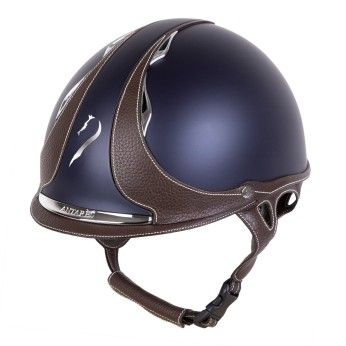
350,00€
The Galaxy helmet features unique color combinations, contrasting stitching and chrome detailing on the shell. For an aesthetic design, the color of the leather and the shell offer a unique combination. Its timeless design adds to the comfort of a breathable helmet. A helmet that conforms to European and American standards, it enables the rider to ride in complete safety.If out of stock, lead time 6 to 8 weeks for size L.
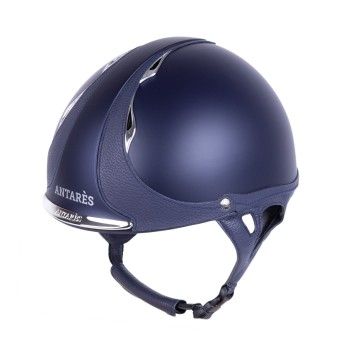
350,00€
The Galaxy helmet features unique color combinations, contrasting stitching and chrome detailing on the shell. For an aesthetic design, the color of the leather and the shell offer a unique combination. Its timeless design adds to the comfort of a breathable helmet. A helmet that conforms to European and American standards, it enables the rider to ride in complete safety.If out of stock, lead time 6 to 8 weeks for size L.